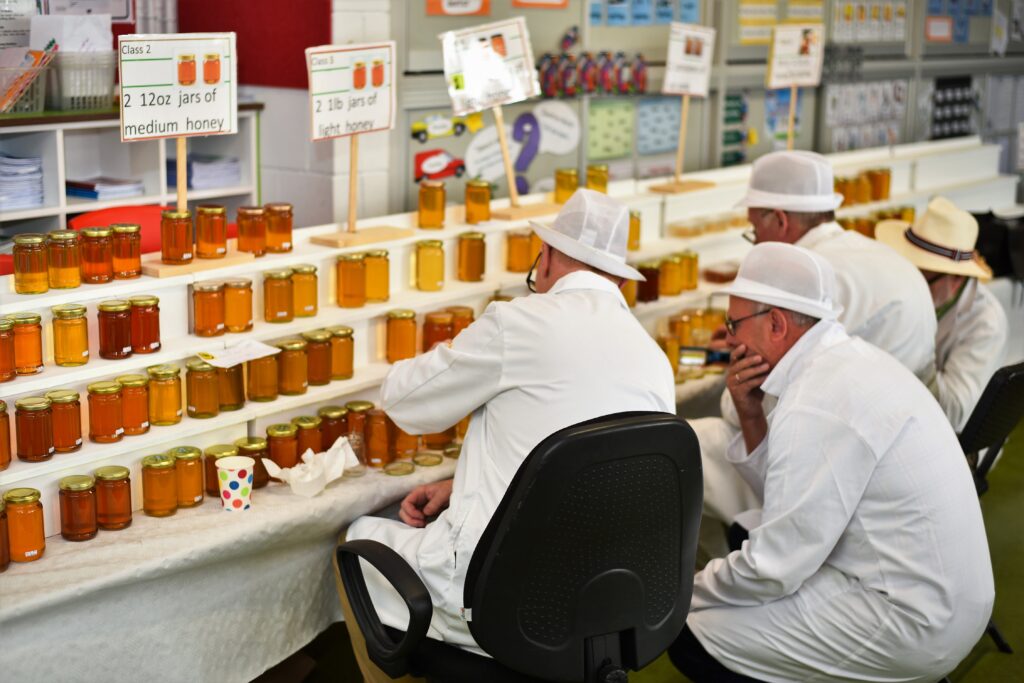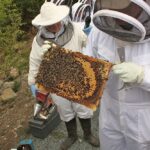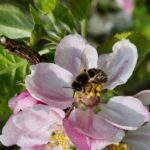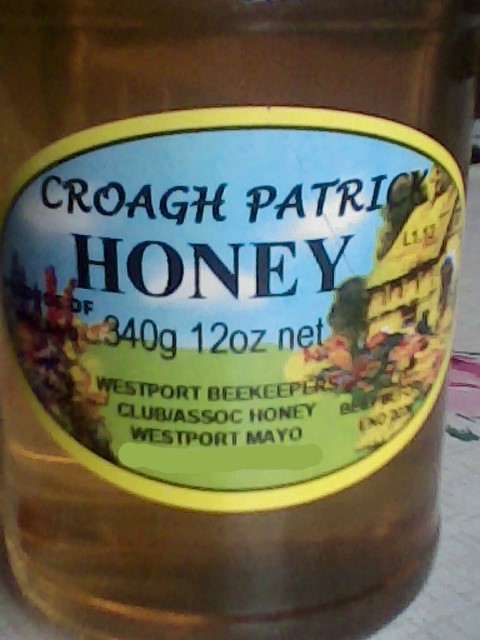HONEY: The Good and the Bad
The Good and the Bad!!
Honey is by definition “a sweet viscous fluid made by honeybees using the nectar of flowering plants”. There are hundreds of different varieties of honey, which vary in colour, odour, and flavour depending on the flowers foraged by the bees that produced the honey.
Taking one spoonful of raw honey every day can have numerous benefits to your health. Honey has been used for its nutritional value since ancient times. It has also been found to be beneficial in the treatment of many clinical conditions. The main nutrients in honey are carbohydrates mostly in the form of glucose and fructose, as well as a mix of amino acids, vitamins, minerals, and antioxidants.
The Good:
What’s in it for you?
In addition to its use as a natural sweetener, honey is used as an anti-inflammatory, antioxidant, and antimicrobial agent. Research about the effects of honey on specific medical conditions has shown that honey, besides tasting very good, can be indeed good for you.
Yet, it is difficult to standardize honey. Honey from different regions may have variations in its health benefits because its efficacy depends on the floral source. Isolating the active fragment of honey does not produce as good an effect as total honey. So, it is best to consume local raw and unrefined honey. In addition, mass produced honey may not have any benefits, but more on this later.
Asthma and cold management
Folk-traditional doctors have long included honey in medicine to treat common conditions. Honey can help prevent and manage asthma, common cough, and fever symptoms. Some studies show that honey treatment helps manage asthma by preventing airway inflammation. Such properties also make honey helpful in the management of chronic bronchitis.
Honey is better than sugar
Honey has a lower glycaemic index (GI) than sugar. It also contains anti-inflammatory and antioxidant properties that may play a role in controlling diabetes mellitus. Honey also reduces blood lipid and reactive protein content in most people, including those living with hyperlipidaemia (excess lipids in the blood). Because studies have been small and had mixed results, more research is needed to determine if honey has more beneficial results in diabetes management. What is clear is that honey is far better than sugar.
Cancer prevention
Honey is rich in flavonoids, which have generated interest among the research community for their anticancer properties. Recent studies suggest that honey may help fight cancer by interfering with cell signal pathways. Honey induces an immune response against cancer cells in vitro and in animal models, preventing cells from proliferating. Although the effect of honey as anti-inflammatory, anti-microbial, and topical wound and ulcer healing is extensively studied, its effect on cancers is not well studied thus far, but there is a great deal of interest.
Cardiovascular health
Antioxidants present in honey may help improve heart health by reducing blood pressure and blood fat levels. They may help lower the risk of heart failure by reducing the ability of platelets in the blood to clot and preventing low-density lipoproteins (a protein that carries cholesterol in the bloodstream) from oxidizing.
Wound healing
Honey is the oldest wound treatment and healing agent known to humankind. It has natural antimicrobial properties and activates an immune response that fights infection, stimulating white blood cells to begin tissue repair. Honey is effective in the treatment of acute and mild wounds and surface and partial burns. It’s particularly effective for diabetes-related foot ulcers.
Source of antioxidants
Your body contains free radicals responsible for aging, impairing cell function, and causing heart and blood vessel disorders. Honey and other antioxidant-rich foods can protect you against such chronic conditions.
Cough medicine
For children over 1 year of age, honey can act as a natural and safe cough suppressant. Some studies show that it’s even more effective than certain cough medicines for people with upper respiratory infections and acute night-time cough.
Gastrointestinal disease
Evidence suggests honey may help relieve gastrointestinal tract conditions such as diarrhoea associated with gastroenteritis. Honey might also be effective as part of oral rehydration therapy, promoting rehydration of the body and speeding recovery from vomiting and diarrhoea.
Neurological disease
Studies suggest that honey might offer antidepressant, anticonvulsant, and anti-anxiety benefits. In some studies, honey has been shown to help prevent memory disorders.
Performance enhancement
Honey is an excellent source of glucose for athletes. During physical exercise, slow-burning sugar is better for sustaining energy. Honey is one of the best options since it releases sugar slowly into the bloodstream. A spoonful of honey dissolved in tepid water can help you get going in the morning.
Healthy development in kids
A study of honey-fed children found that kids tend to gain weight steadily, have no digestive issues, produce lighter and softer bowel movements, have steadier calcium levels, and have a better skin colour. Honey can be an excellent replacement for empty-calorie sweets for kids.
Promoting food digestion and absorption
Honey is rich in prebiotics. Prebiotics promote the health of beneficial bacteria found in the digestive system. Consuming natural honey will increase the population of these bacteria, thus maintaining good gut health.
Generally safe, however!!
It is not recommended to give children honey until they are one year old. Honey may contain Clostridium botulinum spores. Bacteria from the spores can grow and multiply in a baby’s intestines, producing a dangerous toxin that can cause infant botulism. To avoid this, do not give honey — even a tiny taste – to infants.
Some people are sensitive or allergic to specific components in honey, particularly bee pollen. Although rare, bee pollen allergies can cause serious adverse reactions. Honey could also affect blood sugar levels.
The Bad:
Not All Honey is Created Equal
According to compliance management company Decernis, honey is one of the most adulterated foods in the world. A major study of honey samples from 19 different countries published in Nature (October 2018) showed that 27% of the samples were of questionable authenticity. More than half of samples that originated in Asia were adulterated. Take for example Manuka Honey, New Zealand’s iconic product proven to have beneficial health effects and commanding premium pricing. Whereas the annual production of Manuka Honey in New Zealand is only 1700 tons, it is estimated that as much as 10,000 tons of ‘manuka honey’ is sold globally each year. https://www.nature.com/articles/s41598-018-32764-w
Cheap honey is highly filtered and flavoured. It contains little or no pollen – certainly no local pollen, that might be beneficial to you. It may contain antibiotics. Its main ingredient is likely to be high fructose corn (maize) syrup (HFCS), which is commonly derived from GMO maize. HFCS had been linked to diabetes, obesity, hypertension, and liver damage. HFCS also leads to arterial plaque build-up and narrowing of blood vessels.
What is labelled in the shop as honey is not necessarily “Honey”; this can include “Pure Honey”. If the label says something like “Honey from EU and non-EU sources”, it is quite possible that it is not real honey.
The Bottom Line:
Buy Local Raw Honey
Your local raw honey is produced by local beekeepers. Yes, it is more expensive, as it is based on actual production costs of acquiring real honey from bees and not sourcing the cheapest sweetener.
The local honey has all the vitamins, nutrients, and enzymes intact. It has all the anti-viral, anti-bacterial, and anti-fungal properties. It contains all the important antioxidants. As it contains the local pollen, it helps ward off allergies and boost immune functions. It can help stabilize blood pressure, balance blood sugar levels, promote digestive health and much, much more.
Read the label and bee smart!

https://photos.app.goo.gl/owEofaKCT4N1iUdXA
LET YOU BE THE JUDGE!
Disclaimer: This article was compiled as a result of experiences some of our club members have had from using their own honey and we wishes to share.

Westport Beekeepers Apiary practical’s. We offer an educational course to people who wish to start beekeeping. The course is given in approximately eight modules of theory about what the Beekeeper needs to Know? before handling bees which we facilitate at our clubs apiary during the beekeeping season. The course will provide advice both in theory and most importantly the handling of hives and bees for beginners.
In the picture William show’s a newbee (Beekeeper) how to inspect a brood frame with brood in all stages.

The honey bee has three pairs of legs, six legs in total. The rear pair of legs is specially designed with stiff hairs in order to store pollen. This is called pollen basket or corbicula (corbiculae) it is used for carrying pollen back to the hive, often seen with two large yellow pouches full. Pollen is a source of protein for the hive.

